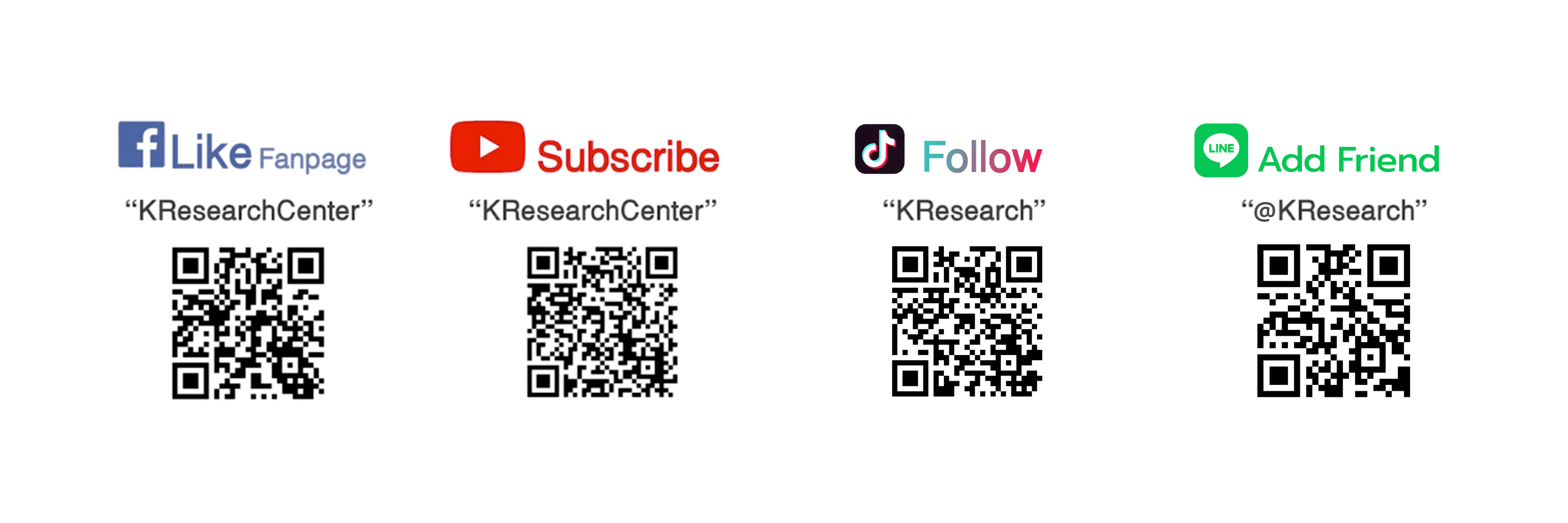Thailand is the world's second largest exporter of rubber gloves. In the first ten months of 2020, the export value of Thai rubber gloves reached USD1.7251 billion or grew by 72%YoY, in which medical surgical gloves accounted for 15% of the total export value while other types of gloves (including general medical gloves) accounted for 85% of the total export value. The substantially increasing demand for medical gloves [1] is mainly driven by the outbreak of novel coronavirus (COVID-19).
Although there is promising news regarding COVID-19 vaccines, KResearch views that the demand for medical gloves will continue to increase due to uncertainty of the COVID-19 situation in the future, including the effectiveness of COVID-19 vaccines and virus mutations, prompting people to continuously care for their health. In addition, the world is gradually moving towards an aging society, which is also pushing up the demand for medical services. KResearch predicts that the above factors will boost the global demand for medical gloves in 2021 to 235 billion pieces from an estimated 170 billion pieces in 2020[2]. The ensuing question is how much opportunity will the increased demand for medical gloves bring to Thai manufacturers?
After analyzing Thailand's competitiveness, it can be found that Thailand's rubber glove export value currently ranks second in the world, accounting for more than 15% of the global rubber glove export value. Thailand also has an advantage in upstream raw materials to support the country as the world’s largest producer and exporter of rubber gloves, while Malaysia relies on imported rubber raw materials from Thailand to produce rubber gloves. However, Thailand remains behind its biggest rival and the world’s largest exporter, Malaysia, who exports similar rubber gloves as Thailand but accounts for 52% of total market share, due to disadvantage in many respects, including production technology and machinery. The production efficiency of Thailand is only one third of that of Malaysia, as Thai manufacturers can produce approximately 6-7 million pieces per machine per month, while their Malaysian counterparts can produce about 20 million pieces per machine per month [3], reflecting the difference in economies of scale. In addition, Thailand’s non-raw material production costs including energy (gas), labor and management costs are about 15-20% higher than those of Malaysia.
Furthermore, Thailand lacks effective measures in promoting and supporting the production of medical gloves throughout the supply chain, especially within downstream industries. In contrast, the Malaysian government has taken measures to truly promote the rubber glove industry and has continuously carried out research and development of rubber-related products, including the establishment of the Malaysian Rubber Export Council to assist exporters in penetrating new markets. KResearch deems that finding markets for Thai exporters is an important factor that can help attract manufacturers to expand the industry downstream. As the demand for medical gloves tends to increase, Thailand will face competition from Malaysia as the major rival in competing for market share. In addition, China and Vietnam may also become important competitors for Thailand in the future, because they have an advantage in production costs, and the leading companies in the glove industry in Malaysia also plan to expand their investment in Vietnam.
KResearch sees that as the demand for general medical gloves tends to increase and the competition may become fierce, Thailand should promote foreign investment continuously, especially proactive investment promotion, such as holding investment promotion activities, inviting potential foreign investors from Germany, Belgium and other countries to discuss and exchange information necessary for investors to decide to invest in Thailand. In addition to bringing the existing markets of foreign investors (their own export or domestic markets), the entry of foreign investors will also help improve production quality of rubber gloves in the fields that use advanced technology, such as surgical gloves. At present, the export value of such products in Thailand is still small, but its added value is higher than that of general medical gloves.
[1] Rubber gloves can be classified according to the HS-code into 2 categories: 1) Surgical and medical gloves (HS-Code 401511) and 2) general purpose gloves, including examination gloves, household gloves and industrial gloves (HS-Code 401519)
[2] Based on the database of the Malaysian Rubber Glove Manufacturers Association (MARGMA) and forecasted by KResearch.
[3] In-depth research report of the Plastics Research Institute: "The Prospects of Thailand Rubber Gloves in the World Market"
Scan QR Code

Annotation
This research paper is published for general public. It is made up of various sources. Trustworthy, but the company can not authenticate. reliability The information may be changed at any time without prior notice. Data users need to be careful about the use of information. The Company will not be liable to any user or person for any damages arising from such use. The information in this report does not constitute an offer. Or advice on business decisions Anyhow.